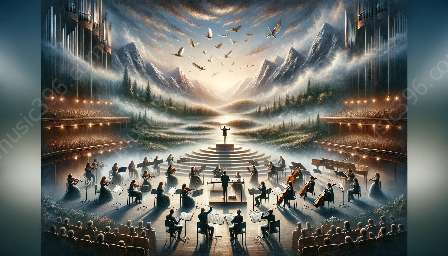Sheet music provides a visual representation of musical ideas, including chords and harmony. Understanding how chords and harmony are reflected in sheet music is essential for musicians and music enthusiasts. In this comprehensive guide, we will explore the symbols, notations, and techniques used to convey chords and harmony in sheet music.
The Basics of Chords
Chords are combinations of three or more notes played simultaneously to produce a harmonious sound. In sheet music, chords are represented using chord symbols and chord diagrams. Chord symbols indicate the root note and the chord type, while chord diagrams illustrate the finger positions on an instrument.
Chord Symbols
Chord symbols are commonly used in popular music genres and jazz. They consist of a letter (indicating the root note) and additional symbols to denote the chord type and any necessary alterations.
For example:
- C major chord is represented as C or Cmaj
- G minor chord is represented as Gm
- A major seventh chord is represented as Amaj7
Chord Diagrams
For instruments like guitar and ukulele, chord diagrams are used to visually represent the finger positions required to play a specific chord. Each string is depicted with a horizontal line, and the frets are indicated with vertical lines. The finger placements are marked by numbered dots on the strings.
Harmony in Sheet Music
Harmony refers to the combination of different musical notes played simultaneously to create a pleasing and integrated sound. In sheet music, harmony is represented through chord progressions, voicings, and notations.
Chord Progressions
Chord progressions are sequences of chords that form the harmonic backbone of a musical piece. They are represented using chord symbols and chord diagrams, indicating the order and duration of each chord within the progression.
Voice Leading and Voicings
Voice leading refers to the smooth transition of individual notes between chords, creating a coherent and melodic movement within the harmony. In sheet music, voice leading is depicted using arpeggios, inversions, and overlapping notes.
Voicings, on the other hand, represent different ways to arrange the notes of a chord. They determine the order and spacing of the chord tones to create a specific harmonic texture.
Notations for Harmony
In addition to chord symbols and diagrams, sheet music uses various notations to indicate harmony, such as:
- Figured bass: Numerical symbols placed below the staff to denote the inversion and quality of a chord
- Roman numerals: Represent the functional harmony and chord progressions within a key
- Harmonic analysis symbols: Abbreviations and symbols used to analyze and annotate harmonic structures
Advanced Techniques and Interpretations
Understanding the representation of chords and harmony in sheet music goes beyond basic symbols and notations. Musicians can use advanced techniques to enhance the harmonic complexity and expressiveness of a musical piece.
Extended Chords and Altered Harmony
Extended chords, such as ninth, eleventh, and thirteenth chords, expand the harmonic palette and add color and richness to the music. Altered harmony involves modifying the traditional chord tones with sharps, flats, or other alterations to create tension and dissonance.
Modal Interchange and Borrowed Chords
Modal interchange refers to borrowing chords from parallel or related keys to introduce unexpected harmonic flavors. Borrowed chords are used to temporarily shift the tonal center and add intrigue to the harmonic progression.
Harmonic Analysis and Interpretation
Harmonic analysis involves examining the underlying harmonic structure of a piece of music, identifying chord functions, and interpreting the harmonic relationships. Musicians can use this analysis to make informed and expressive decisions while performing or composing.
Application of Chords and Harmony
Chords and harmony in sheet music serve as the foundation for musical arrangement, improvisation, and performance. Understanding their representation empowers musicians to interpret and express the intended emotions and ideas within a musical composition.
Arrangement and Orchestration
Arrangers and composers use sheet music to notate chord voicings, harmonic progressions, and orchestrations. Understanding how chords and harmony are represented allows them to create compelling and balanced arrangements for various ensembles and musical styles.
Improvisation and Jazz Standards
Improvising musicians rely on sheet music to understand the harmonic framework of a composition. By interpreting chord symbols and harmony notations, they can spontaneously create melodic lines and variations within the established harmonic structure.
Performance and Interpretation
Sheet music provides vital information for performers, including pianists, guitarists, and other instrumentalists, to accurately reproduce the intended chords and harmony. Through interpretation, musicians infuse their individual expression and artistry into the harmonic content of the music.
Conclusion
Exploring the representation of chords and harmony in sheet music enhances our understanding of the fundamental elements of music. By deciphering the symbols, notations, and techniques used to convey chords and harmony, musicians can bring depth, emotion, and creativity to their musical endeavors.









































